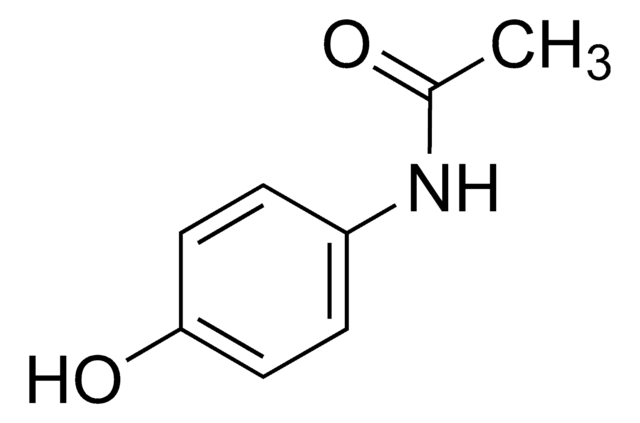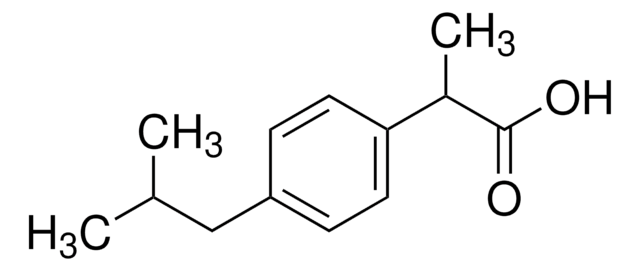A3035
Acetaminophen
analytical standard
Synonym(s):
4′-Hydroxyacetanilide, 4-Acetamidophenol, N-(4-Hydroxyphenyl)acetamide, N-Acetyl-4-aminophenol, APAP, Paracetamol
About This Item
Recommended Products
grade
analytical standard
Quality Level
form
powder
packaging
vial of 1 g
technique(s)
HPLC: suitable
gas chromatography (GC): suitable
mp
168-172 °C (lit.)
application(s)
forensics and toxicology
pharmaceutical (small molecule)
veterinary
SMILES string
CC(=O)Nc1ccc(O)cc1
InChI
1S/C8H9NO2/c1-6(10)9-7-2-4-8(11)5-3-7/h2-5,11H,1H3,(H,9,10)
InChI key
RZVAJINKPMORJF-UHFFFAOYSA-N
Gene Information
human ... FAAH(2166) , PTGS1(5742) , PTGS2(5743) , TRPV1(7442)
Looking for similar products? Visit Product Comparison Guide
Application
Packaging
Signal Word
Warning
Hazard Statements
Precautionary Statements
Hazard Classifications
Acute Tox. 4 Oral
Storage Class Code
11 - Combustible Solids
WGK
WGK 1
Flash Point(F)
364.3 °F - Pensky-Martens closed cup
Flash Point(C)
184.6 °C - Pensky-Martens closed cup
Personal Protective Equipment
Choose from one of the most recent versions:
Already Own This Product?
Find documentation for the products that you have recently purchased in the Document Library.
Customers Also Viewed
Our team of scientists has experience in all areas of research including Life Science, Material Science, Chemical Synthesis, Chromatography, Analytical and many others.
Contact Technical Service






